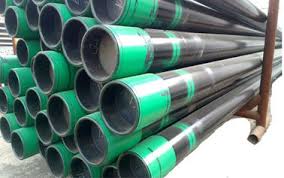What is casing pressure?
Casing pressure is the pressure in the annular space of oil casing and tubing. Reasonable control of casing pressure can maintain a good fluid level, thereby improving the high and stable production of oil wells. Casing is a steel pipe that runs through the formation and various tools in an oil well. It has the function of protecting the formation, preventing oil well collapse, and preventing oil well leakage. When the casing pressure is large, the casing will be subject to greater stress and prone to deformation, cracking and other problems, thus affecting the safety and stability of the oil well. Therefore, attention needs to be paid to controlling the casing pressure during oil well production.

What is tubing pressure?
The remaining pressure after the flowing pressure lifts the oil and gas from the bottom of the well to the wellhead through the tubing is called tubing pressure, or oil pressure for short. Measured by the tubing pressure gauge, its value is the flowing pressure minus the oil and gas mixed liquid column pressure, friction resistance and slip loss in the well. The oil pressure depends on the flow pressure, and the flow pressure is related to the oil layer pressure. Therefore, the oil pressure is a reflection of the energy of the oil well.
How to calculate casing pressure?
Calculation method of casing pressure: The calculation formula of casing pressure is: casing pressure = formation pressure - pressure at the bottom of casing. Formation pressure refers to the pressure generated by the formation, which generally needs to be estimated based on geological exploration data and pressure test results. The pressure at the bottom of the casing is generally measured by a wellhead pressure gauge.
How to calculate tubing pressure?
Calculation method of oil pressure: The calculation formula of oil pressure is: oil pressure = static pressure + dynamic pressure. Among them, static pressure refers to the pressure generated by the height of the water column in the oil well, and dynamic pressure refers to the pressure generated by the formation and the artificial pressure injected. The size of oil pressure has an important impact on the production and recovery of oil wells, so it needs to be reasonably controlled during the actual production process.
Relationship of casing and tubing pressure
There is a close relationship between casing pressure and oil pressure. Due to the existence of casing, a pressure difference will be formed between the formation and the oil well, which is the casing pressure. The size of the casing pressure will directly affect the pressure inside the oil well, that is, the oil pressure. Therefore, in the actual production process, it is necessary to comprehensively consider the casing pressure and oil pressure, and carry out reasonable control and adjustment to ensure the normal production, safety and stability of the oil well.
Casing pressure is the pressure in the annular space of oil casing and tubing. Reasonable control of casing pressure can maintain a good fluid level, thereby improving the high and stable production of oil wells. Casing is a steel pipe that runs through the formation and various tools in an oil well. It has the function of protecting the formation, preventing oil well collapse, and preventing oil well leakage. When the casing pressure is large, the casing will be subject to greater stress and prone to deformation, cracking and other problems, thus affecting the safety and stability of the oil well. Therefore, attention needs to be paid to controlling the casing pressure during oil well production.

What is tubing pressure?
The remaining pressure after the flowing pressure lifts the oil and gas from the bottom of the well to the wellhead through the tubing is called tubing pressure, or oil pressure for short. Measured by the tubing pressure gauge, its value is the flowing pressure minus the oil and gas mixed liquid column pressure, friction resistance and slip loss in the well. The oil pressure depends on the flow pressure, and the flow pressure is related to the oil layer pressure. Therefore, the oil pressure is a reflection of the energy of the oil well.
How to calculate casing pressure?
Calculation method of casing pressure: The calculation formula of casing pressure is: casing pressure = formation pressure - pressure at the bottom of casing. Formation pressure refers to the pressure generated by the formation, which generally needs to be estimated based on geological exploration data and pressure test results. The pressure at the bottom of the casing is generally measured by a wellhead pressure gauge.
How to calculate tubing pressure?
Calculation method of oil pressure: The calculation formula of oil pressure is: oil pressure = static pressure + dynamic pressure. Among them, static pressure refers to the pressure generated by the height of the water column in the oil well, and dynamic pressure refers to the pressure generated by the formation and the artificial pressure injected. The size of oil pressure has an important impact on the production and recovery of oil wells, so it needs to be reasonably controlled during the actual production process.
Relationship of casing and tubing pressure
There is a close relationship between casing pressure and oil pressure. Due to the existence of casing, a pressure difference will be formed between the formation and the oil well, which is the casing pressure. The size of the casing pressure will directly affect the pressure inside the oil well, that is, the oil pressure. Therefore, in the actual production process, it is necessary to comprehensively consider the casing pressure and oil pressure, and carry out reasonable control and adjustment to ensure the normal production, safety and stability of the oil well.









